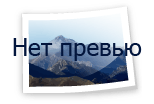Thanks to painting software, artists are not limited to traditional brushes any more, but are encouraged to create their own. There are many brilliant free Photoshop brushes out there to download, and in this three-part workshop I will be describing how to use custom brushes to create characters, costumes and the environment.
While this workshop is mainly designed for Photoshop users (CS2 and above), I will also share tips for Corel Painter users to achieve similar effects. Download all 10 brushes here, and stay tuned for part two next week!
01. Ragged hard round brush
 [показать]
[показать]This is the first brush I use for any painting. An altered Hard Round brush with ragged edges is perfect for the first stages of colour blocking, because aside from applying colours, its edges will prevent the transitions from being too rough. The pressure sensitive opacity will enable you to create a bigger variety of skin tones.
Photoshop:
- Opacity: 100%
- Flow: 100%
- Spacing: 10%
- Other Dynamics: Opacity and Flow, 0%
- Smoothing: checked
 [показать]
[показать]Painter:
- Tinting: Basic Round
- Opacity: 5-15%
- Grain: 0%
- Resat: 20%
- Bleed:100%
- Jitter: 0%
02. Blending spackled brush
 [показать]
[показать]A spackled brush is the best thing to choose when you want to blend facial skin tones. Thanks to its shape and pressure-related opacity, it can blend really well and hint at skin pore texture. Smooth the transitions with this brush, while picking the colours with an Eye Dropper tool. Painter users can use the Blender brush; while it doesn't render a natural skin texture, it creates satisfying effects.
Photoshop:
- Opacity: 20-100%
- Flow: 100%
- Spacing: 6
- Other Dynamics: Opacity and Flow, 0%
- Scattering: Both Axes, 109%
 [показать]
[показать]Painter:
- Tinting: Blender
- Opacity: 15%
- Grain: 0%
- Resat: 0%
- Bleed: 100%
- Jitter: 0%
- Blenders: Just Add Water
- Opacity: 15%
- Grain: 0%
- Bleed: 50%
- Jitter: 0
03. Airbrush
 [показать]
[показать]The Airbrush is an extremely flexible tool. It's perfect for adding in anything to your work, from painting strands of hair to adding little details, such as blushes, moles and so on. An Airbrush is also a good way to soften the edges of painted objects and those rougher transitions between certain shades, creating an illusion of fleshy softness.
Photoshop:
- Opacity: 80-100%
- Flow: 100%
- Other Dynamics: Opacity and Flow, 0%
- Shape dynamics: just switched on
 [показать]
[показать]Painter:
- Airbrush: Soft Airbrush
- Opacity: 5-15%
- Resat: 100%
- Bleed: 100%
- Jitter: 0%
04. Rotating brush
 [показать]
[показать]This brush is perfect for enriching the colour palette of an already painted body part, and I always use it for this task. Thanks to its distinctive shape and angle variations, applying new shades naturally is extremely easy: just choose a colour and run with it over the painted skin. If you apply the colours carefully on a low opacity, you won't really require any extra smoothing. This brush also works great as a skin tone blender.
Photoshop:
- Opacity: 50%
- Flow: 100%
- Other Dynamics:
- Opacity and Flow, 0%
- Scattering: 100%
- Shape dynamics: just switched on
 [показать]
[показать]Painter:
- Airbrush: Detail Airbrush
- Opacity: 2-20%
- Resat: 20-70%
- Bleed: 100%
- Jitter: 2-3
05. Spattery brush
 [показать]
[показать]The small Spackled brush is great to render skin pores with. Use it on a low opacity setting on a separate layer, so you can play with layer modes later (Soft Light usually gives the most natural effects). To enrich the 'automatic' pore effect, create another layer on top of the existing one and, with an Airbrush, randomly place some small lighter dots on top of the previous ones.
Photoshop:
- Opacity: 100%
- Flow: 100%
- Spacing: 75%
- Other Dynamics: Opacity and Flow, 0%
- Smoothing: checked
 [показать]
[показать]Painter:
- Airbrush: Tiny Spattery Airbrush
- Spread: 50%
- Flow: 1
- Feature: 20
- Opacity: 70%
06. Triple dot brush
 [показать]
[показать]After having the hair basis marked with an Airbrush, it's good to start adding some texture. This simple Spackled brush is perfect for this job. Start applying the hair strands, gradually moving from bigger and darker to smaller and lighter.
In Painter, I highly recommend the Acrylic brushes – aside from a 'strandy' feel, they will automatically create a very interesting texture.
Photoshop:
- Opacity: 100%
- Flow: 100%
- Other Dynamics: Opacity and Flow, 0%
- Smoothing: checked
 [показать]
[показать]